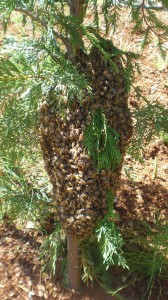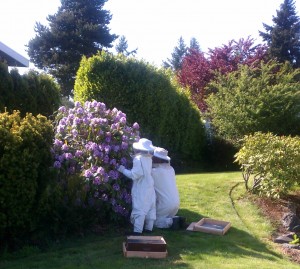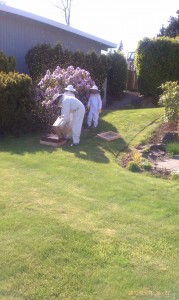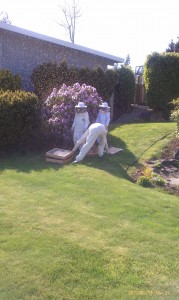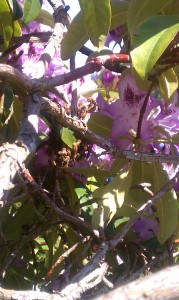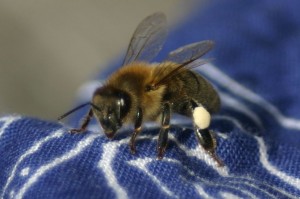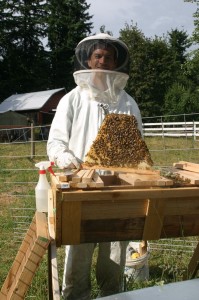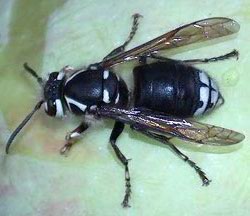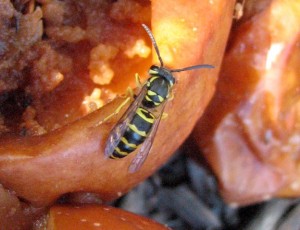
Yellow Jackets eat sweet fruit, other insects, & pieces of meat off your dinner plate
Renee,
Thank you for the pictures–they are always helpful.
You have a colony of western yellow jackets (Vespula Pensylvanica) living in your roof. They are a similar to the eastern yellow jackets (Vespula Maculifrons), which usually live in underground nests. I’ve attached photos of a honey bee, a yellow jacket, and a paper wasp for you.
These bees live on an annual cycle–the yellow jacket queen is the only one which hibernates over the winter. She emerges in the spring and raises a clutch of worker bees all by herself. These in turn help enlarge the nest and raise more bees as the year progresses. By this time of year the hive has grown quite large–several thousand bees usually, and it is easier to spot now for all the activity going on. They have most likely stopped raising worker bees and are producing queens which will soon leave the nest, mate, and then find a suitable place to hibernate through the winter. The original hive queen & workers will die as winter approaches–these are bugs after all. 2 weeks ago, I removed a paper wasp (Polistes Dominula) nest which had hundreds of emerging & newly hatched queens ready to start the cycle over again next year.
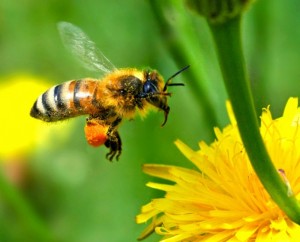
A Honey Bee has a fuzzy body & will carry bags of pollen on its back legs
The good news: If you do nothing, then the bees will go away by themselves in the next couple months. These are beneficial insects because they eat the caterpillars & flies that cause problems in your garden vegetables.
The bad news: Yellow jackets, wasps & hornets are much more aggressive than honey bees, and will come out in force if you happen to disturb their nest. Unlike honey bees, they can sting repeatedly. (They especially don’t like it if you blow a breath of air into their front door) Because they are meat-eating insects, they will come and visit your dinner plate when you are having an outside barbecue.
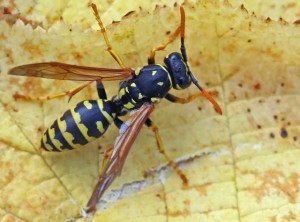
Paper Wasps are a little larger than yellow jackets
My recommendation: In your case, if you can live with them for another month or two, I would let them be. Before next spring, take a tube of caulk around and seal up any non-screened cracks to your roof that are near where people walk.
Nathan
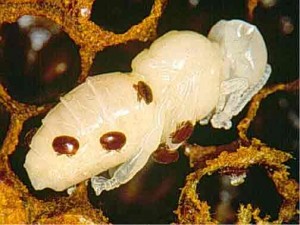 I was given this article last weekend (August 11 & 12, 2012) at a honeybee workshop hosted by Jacqueline Freeman and Michael Thiele. It fundamentally challenges the perspective of raising and breeding resistant or hygienic bees.
I was given this article last weekend (August 11 & 12, 2012) at a honeybee workshop hosted by Jacqueline Freeman and Michael Thiele. It fundamentally challenges the perspective of raising and breeding resistant or hygienic bees.
